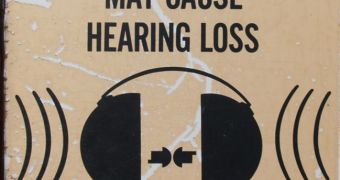Teenagers today have a harder time hearing what goes on around them than young people did a few decades ago.
The new discovery could put a new spin on parents' complaints that their children don't listen to them – it may be that the teens simply don't physically hear them.
Over the past twenty years or so, the number of adolescents faced with hearing problems has increased by about 30 percent, which is a dramatic rise, experts agree.
In a research published this week by experts at the Brigham and Women's Hospital, in Boston, it is shown that about 20 percent of all teens suffer from measurable, potentially serious hearing loss.
Full details of the research were published in this week's issue of the esteemed scientific Journal of the American Medical Association (JAMA), LiveScience reports.
What the researchers behind the work found puzzling was the fact that healthcare experts, including physicians in hospitals and clinics, were unable to mention any reasons for why this may be happening.
The situation is made even worse by the fact that treating hearing loss is notoriously difficult to do, a lot more so than treating vision loss.
After people reach the age of 35, their hearing begins to deteriorate regardless, which means that they may lose this ability a lot faster if they start out with problems since adolescence.
“I would not say [the loss] is natural given that the prevalence has increased over the 15-year period. There must be environmental factors that are contributing. […] The role of noise deserves further study,” explains Gary Curhan.
The expert, who is also based at Brigham and Women's, is a coauthor of the study.
One explanation for the generalized hearing loss may be the rise of portable music players, which have become a fixture with today's teens.
Headphones, regardless if they are in-ear, over-ear or circumaural, blast sounds directly into the ear drum, subjecting it to “sonic torture” around the clock.
Teens also listen to music at very high volumes, so as to block out any other noises when going down the street, or when commuting for example.
Eventually, constant exposure to intense sounds leads the ear drum to become loose, and not respond all that well to stimuli.

 14 DAY TRIAL //
14 DAY TRIAL //